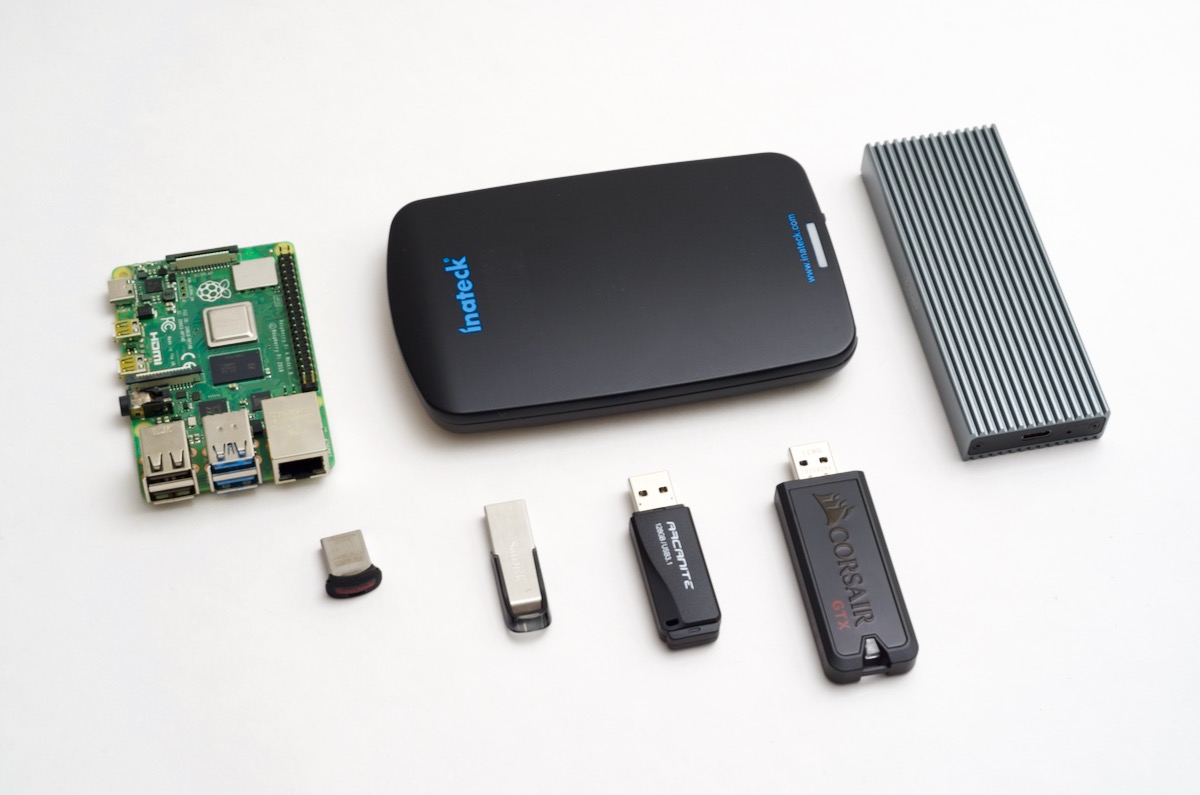Raspberry Pi USB Boot - UASP, TRIM, and performance
In the past few weeks, I reviewed USB drive performance on the Raspberry Pi 4, and the importance of UASP support for USB drive performance.
Both posts generated great discussion, and there were three things I wanted to cover in this follow-up, namely:
- Which drives support UASP
- Real-world performance benchmarks
- TRIM support
For reference, here are all the products I'm testing in this post (product links are to their Amazon product page, starting from top middle, clockwise):
